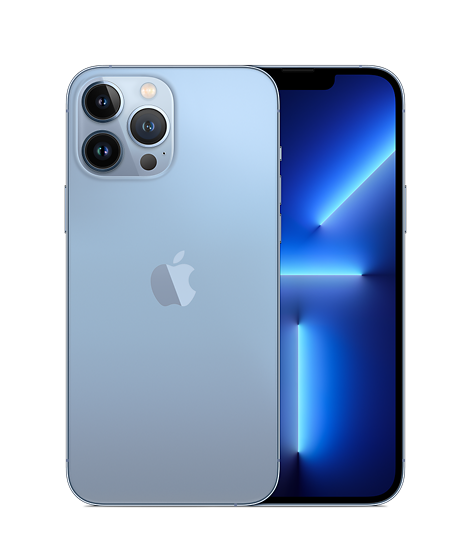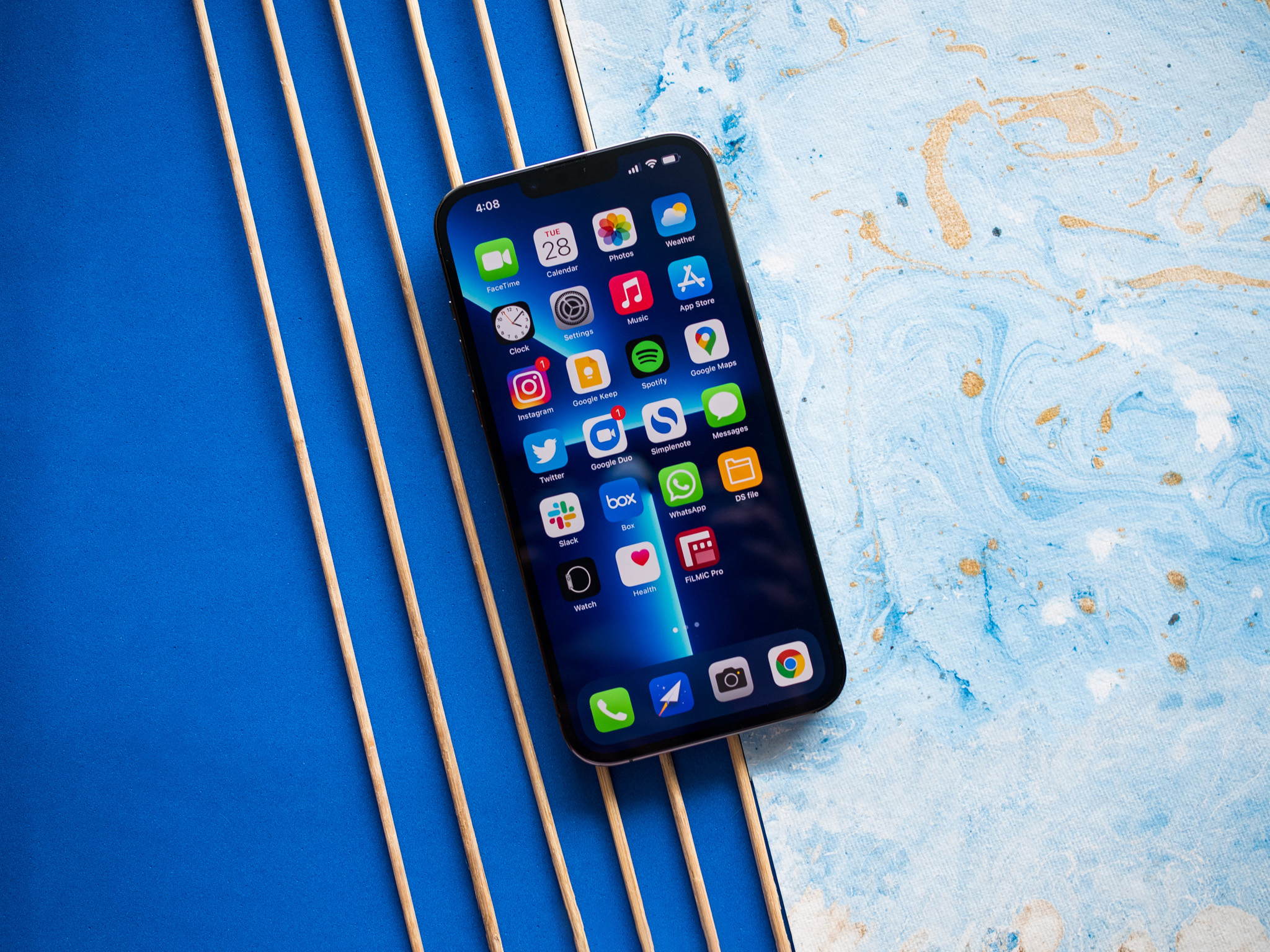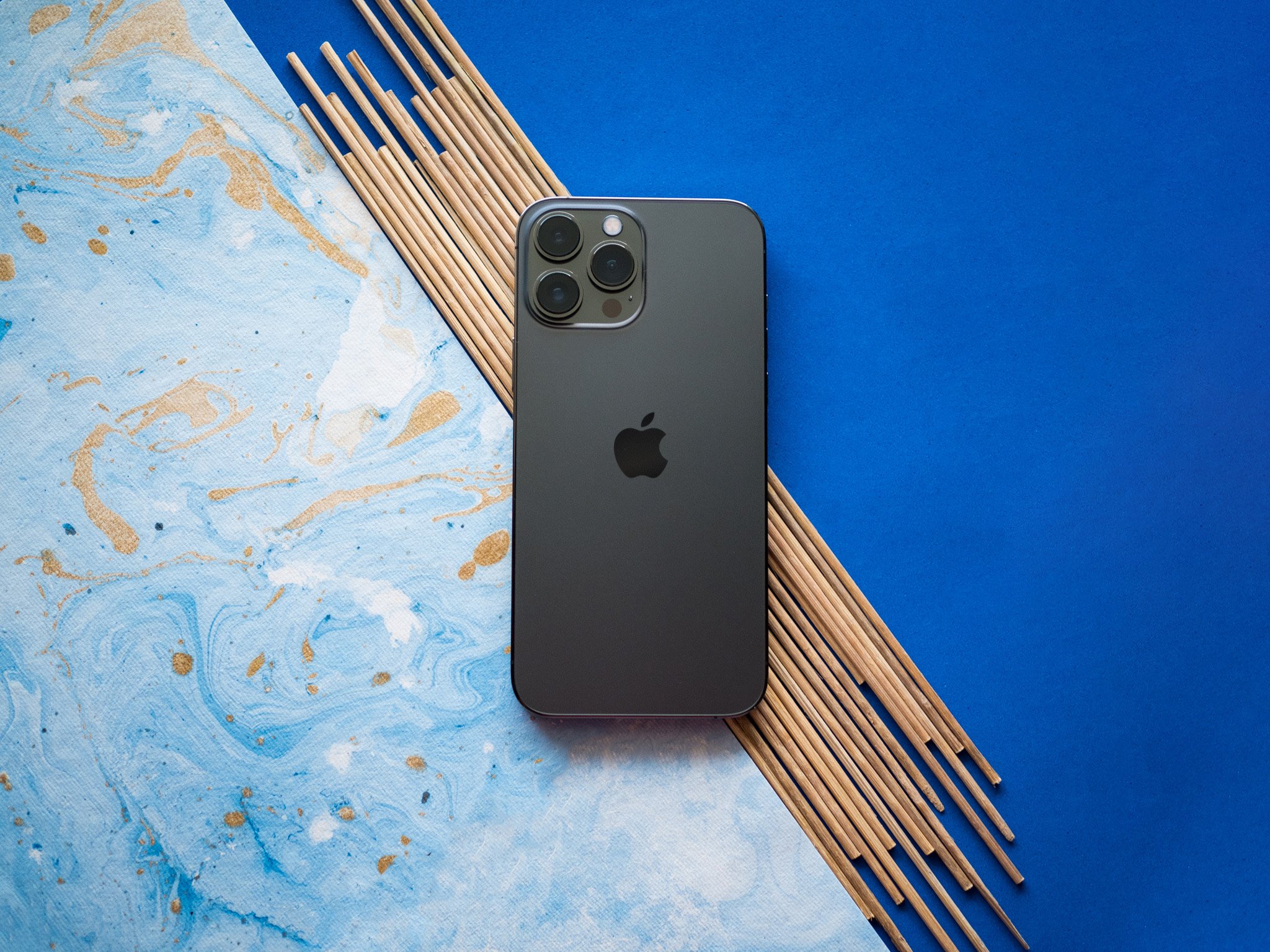Google Pixel 6 Pro
Ultimate camera phone
Pros
- Groundbreaking cameras
- 120Hz AMOLED screen
- Internal hardware on par with rivals
- Android 12 out of the box
- Water resistance and wireless charging
- Costs less than other flagships
Cons
- Build quality inconsistencies
- Limited availability
- Won't get as many updates as the iPhone
The Pixel 6 Pro nails the fundamentals while delivering the best cameras you'll find in any phone today. Google went with an all-new design with a large camera bar at the back that makes the phone stand out. There's a stunning 120Hz AMOLED screen, custom Tensor hardware with the latest cores, Android 12 out of the box, and all the extras.
iPhone 13 Pro Max
The ideal all-rounder
Pros
- Outstanding battery life
- Smooth 120Hz OLED panel
- Fastest internal hardware
- Standout cameras for photos and videos
- Five years of iOS version updates
- All the extras
Cons
- Costlier than the Pixel 6 Pro
- Still uses a Lightning connector
- Missing always-on mode
- Notch is irritating
The iPhone 13 Pro Max looks the same as its predecessor, but it has upgraded internal hardware and a large battery that allows it to easily deliver over a day's worth of use. Then there's a 120Hz panel — a first on the iPhone — new cameras that excel at videos, five years of software updates, and a familiar design. If you want to switch to iOS, this is the phone to buy.
It's easy to say that the Pixel 6 Pro is one of the best Android phones in the market today. Google has finally delivered a phone that holds its own not just on the camera front but other areas as well. The iPhone 13 Pro Max has a lot going for it as well; it has much better cameras, lasts over a day with ease, and has a new 120Hz screen. So if you're looking to pick up a new phone, let's take a look at what you're getting from these two devices.
Google Pixel 6 Pro vs. iPhone 13 Pro Max: Design and screen
It's clear that Google and Apple went with two entirely different philosophies for their phone designs. Google's aesthetic with the Pixel 6 Pro is quirky and fun, with a large camera bar at the back housing the three lenses. The bar dominates the design at the back and gives the Pixel 6 Pro a lot of visual flair.
The Pixel 6 Pro has a distinctive design, but Google has build quality issues.
Meanwhile, the iPhone 13 Pro Max has a much more muted design in comparison to the Pixel 6 Pro, with the overall design language not changing from last year. You get a large slab with flat sides that makes it somewhat easy to hold, but the biggest issue is the width; the iPhone 13 Pro Max is 2.2mm wider and a full 30g heavier than the Pixel 6 Pro, even though it has a smaller battery and the same screen size.
That said, the Pixel 6 Pro is taller and noticeably thicker, but the fact remains that it isn't as unwieldy to use as the iPhone. While Google has managed to deliver a phone that looks better, initial Pixel 6 Pro units have issues with build quality and overall fit and finish. This is a regular enough occurrence with Pixel hardware that I'm astonished Google hasn't sorted it out by now.
Continuing to the front of the phone, the distinctive notch is still present on the iPhone, and while it is thinner than before, it is just as much of an eyesore. Google, for its part, has switched to a cutout to house the front cameras like every other Android manufacturer, and it looks cleaner.
With 120Hz panels and stereo sound, these phones are fantastic for consuming content on the go.
As for the screens, the Pixel 6 Pro features a 6.71-inch AMOLED panel with a 120Hz refresh rate and HDR10+, and like other Android flagships is has variable refresh. It automatically scales the refresh from 10Hz to 120Hz based on the use case, and the panel itself is one of the best around.
The iPhone 13 Pro Max also gets a 120Hz panel for the first time, and while it is limited right now, there is an immediate difference when you're browsing in Safari or going through your camera roll in Photos. You get the same 6.7-inch screen as last year, but the panel is brighter and has Dolby Vision in addition to HDR10+.
Both devices also get stereo sound, and in general, they're great for playing games and streaming content on the go. The Pixel 6 Pro has the added advantage of a customizable always-on mode, but even though the iPhone has an OLED panel, there's no such feature in iOS.
Google Pixel 6 Pro vs. iPhone 13 Pro Max: Hardware
With these two devices aimed at the flagship category, they're packing the absolute latest in terms of hardware. The Pixel 6 Pro sees the introduction of Google's custom silicon, the Tensor. The platform is built on the same 5nm node that Qualcomm and Samsung use, and it leverages the Exynos 2100 but with a few tweaks.
The iPhone 13 Pro Max has incredibly powerful hardware, but the Pixel 6 Pro isn't far behind.
The main highlight is the two Cortex X1 cores, with most other designs this year featuring just one of these cores. The Tensor also has A76 and A55 cores and a powerful GPU that handles anything you throw at it with relative ease. One of the key reasons for Google switching to its own silicon is machine learning use cases, and in that area, the Tensor absolutely delivers.
Of course, Apple's phones come with the company's own chipsets, and the A15 Bionic continues to lead the way for single- and multi-core workloads. The iPhone 13 Pro Max is rocking the fastest hardware in this category and can easily handle the most visually-demanding iOS games.
As for storage, both phones come with 128GB of storage as standard, with the Pixel 6 Pro available in a 256GB model as well. You can pick up the iPhone in 256GB, 512GB, and a 1TB variant should you need a lot of internal storage. The Pixel 6 Pro features 12GB of RAM on all models, with the iPhone offering 6GB — while that's considerably less in the context of Android, it is more than adequate for iOS.
Both phones deliver 5G connectivity over Sub-6 and mmWave in the U.S., with the global models featuring Sub-6 by default. The Pixel 6 Pro gets Wi-Fi 6e and Bluetooth 5.2 as well, with the iPhone on Wi-Fi 6 and Bluetooth 5.0.
When it comes to battery life, the iPhone 13 Pro Max has a distinct edge.
The Pixel 6 Pro has a larger 5000mAh battery, with the iPhone packing a 4352mAh unit. However, the iPhone 13 Pro Max is able to deliver better battery life, consistently going over a day even with heavy use. The optimization with the A15 Bionic and iOS 15 has paid dividends here, and the iPhone has an edge over its Android rivals this year.
But for charging, the iPhone continues to be behind the curve. The Pixel 6 Pro charges over USB-C and has 30W wired and 23W wireless charging, while the iPhone 13 Pro Max still uses the Lightning port and goes up to 27W and 15W wirelessly over MagSafe. At just under two hours, it also takes a lot longer to charge than just about any other Android flagship.
| Category | Google Pixel 6 Pro | iPhone 13 Pro Max |
|---|---|---|
| Operating system | Android 12 | iOS 15 |
| Display | 6.71-inch 120Hz AMOLED 3120x1440 (20:9) HDR10+ Gorilla Glass Victus |
6.8-inch 120Hz OLED 2778x1284 (19.5:9) HDR10, Dolby Vision Ceramic Shield |
| Chipset (NA) | Google Tensor 2 x 2.80GHz X1 4 x 2.25GHz A76 4 x 1.80GHz A55 Mali-G78 MP20 5nm |
Apple A15 Bionic 2 x 3.22GHz Avalanche 4 x 2.40GHz Blizzard 5-core GPU 5nm |
| RAM | 12GB LPDDR5 | 6GB |
| Storage | 128GB/256GB UFS3.1 | 128GB/256GB/512GB/1TB |
| MicroSD slot | ❌ | ❌ |
| Rear camera 1 | 50MP f/1.9, OIS 4K at 60fps |
12MP f/1.5, sensor-shift OIS 4K at 60fps Dolby Vision Cinematic mode |
| Rear camera 2 | 48MP, f/3.0 telephoto, OIS 4x optical zoom |
12MP, f/2.8 telephoto, OIS 3x optical zoom |
| Rear camera 3 | 12MP, f/2.2 wide-angle |
12MP, f/1.8 wide-angle |
| Front camera | 11MP f/2.2 auto focus |
12MP f/2.2 auto focus |
| Connectivity | 5G (Sub-6 and mmWave) Wi-Fi 6e MU-MIMO Bluetooth 5.2 LE, NFC, GPS |
5G (Sub-6 and mmWave) Wi-Fi 6 MU-MIMO Bluetooth 5.0 LE, NFC, GPS |
| Audio | USB-C Stereo speakers |
Lightning Stereo speakers |
| Battery | 5000mAh Non-removable |
4352mAh Non-removable |
| Charging | USB-C PD3.0 Fast charge (30W) Wireless charging (23W) |
Lightning Fast charge (27W) MagSafe wireless (15W) |
| Water resistance | IP68 | IP68 |
| Security | In-display fingerprint sensor Face unlock |
Face ID |
| Colors | Cloudy White, Sorta Sunny, Stormy Black | Graphite, Sierra Blue, Gold, Silver |
| Dimensions | 163.9 x 75.9 x 8.9mm 210g |
160.8 x 78.1 x 7.7mm 240g |
Google Pixel 6 Pro vs. iPhone 13 Pro Max: Software
The Pixel 6 Pro is the first phone with Android 12 out of the box, and it comes with a brand-new design and a slate of new features. The Material You design feels fresh and fun, and it is highly customizable.
You get the best of Android and iOS here.
By contrast, iOS 15 feels dated in terms of design. It has a lot to offer when it comes to privacy and security, but the design itself hasn't changed for a long time now, and it is in need of an overhaul. On the subject of changes, Google is introducing a lot of privacy-focused features with Android 12, including recording indicators for the camera, a dashboard that lets you see what service is accessing your data, and a whole lot more.
Android 12 also brings a few changes to notifications, and it is in this regard where Android has a distinct lead over iOS. I don't like the way iOS handles notifications, and while there's a new Focus mode that lets you set profiles and mute notifications, it isn't anywhere as refined as what you'll find on Android.
Then there's also the fact that basic features on iOS are annoying; if I want to share a photo that's stored on the NAS to Instagram, I can't just download it to the phone's storage and access it from there. There are additional hurdles in the way because of the way iOS handles file system access, and that is in need of an overhaul as well.
But where iOS has an edge is long-term updates; with five years of guaranteed updates, the iPhone 13 Pro Max will get two more platform updates than the Pixel 6 Pro. Google will roll out three Android updates to its flagship and five years of security updates, but that's less than what you get on the iPhone.
Google Pixel 6 Pro vs. iPhone 13 Pro Max: The best of both ecosystems
These are two of the best phones available for sale today; regardless of whatever phone you end up with, you're getting the latest hardware, cameras that take outstanding photos, and all the extras you'd want in a flagship.
These are two of the best phones today — but the Pixel 6 Pro is the obvious choice.
Honestly, I like the iPhone 13 Pro Max a lot more than I thought I would. Yes, it has a few issues; it is too wide, the notch is irritating, and I don't like the fact that it still uses the Lightning port. But these are minor annoyances, and at the end of the day, you're getting a phone with a sublime 120Hz AMOLED panel, the fastest hardware of any device, fantastic cameras for photos and videos, and battery life that exceeds a day. Factor in five years of updates, and you have one of the best all-rounders today.
That said, if I had to pick a winner, it would have to be the Pixel 6 Pro. It has the best cameras of any phone today, the design makes it stand out, and unlike any of its predecessors, there are no major drawbacks here. This is the first time in five years that Google has delivered a phone that doesn't feel like it is missing out on core features, and that alone makes the Pixel 6 Pro worthy of consideration. Then there's also the fact that the Pixel 6 Pro undercuts its rivals by a significant margin, making it just that little bit more enticing.
The biggest downside with the Pixel 6 is its limited global availability; it is sold in just nine countries, and even then, Google isn't doing a particularly good job stocking the product. But if you live in a region where the Pixel 6 Pro is sold officially, it is the obvious choice.
Google Pixel 6 Pro
Ultimate camera phone
$899 at Best Buy See at Amazon $899 at B&H
The best camera at an unbeatable price
The Pixel 6 Pro is the best phone you can buy right now if you take a lot of photos. The rest of the hardware is on par with other flagships, including a 120Hz AMOLED screen, the latest internal hardware, and all the extras you want. There's even Android 12 out of the box, and the best part is that the Pixel 6 Pro undercuts its rivals.
iPhone 13 Pro Max
The ideal all-rounder
$1,099 at Amazon $1,000 at Best Buy $1,099 at Apple
The obvious choice for iOS
If you're already using an iPhone and want to upgrade, the iPhone 13 Pro Max is the ideal choice for you. It has the latest internal hardware, absolutely amazing cameras, a gorgeous 120Hz screen, battery life that lasts over a day and will get updates for five years.
Source: androidcentral


